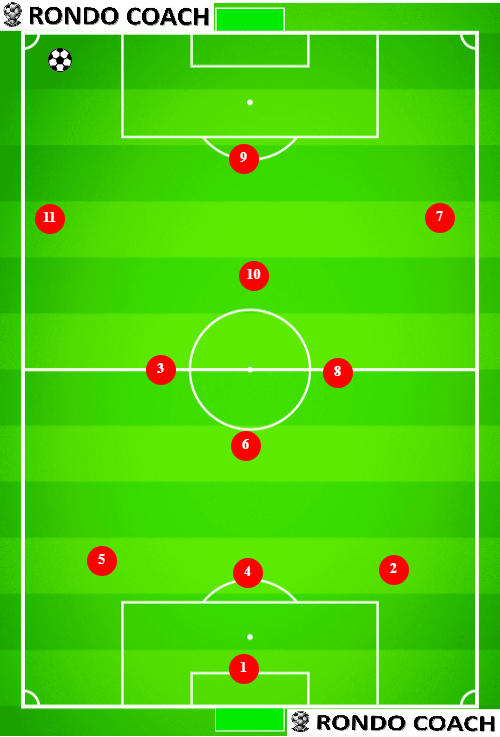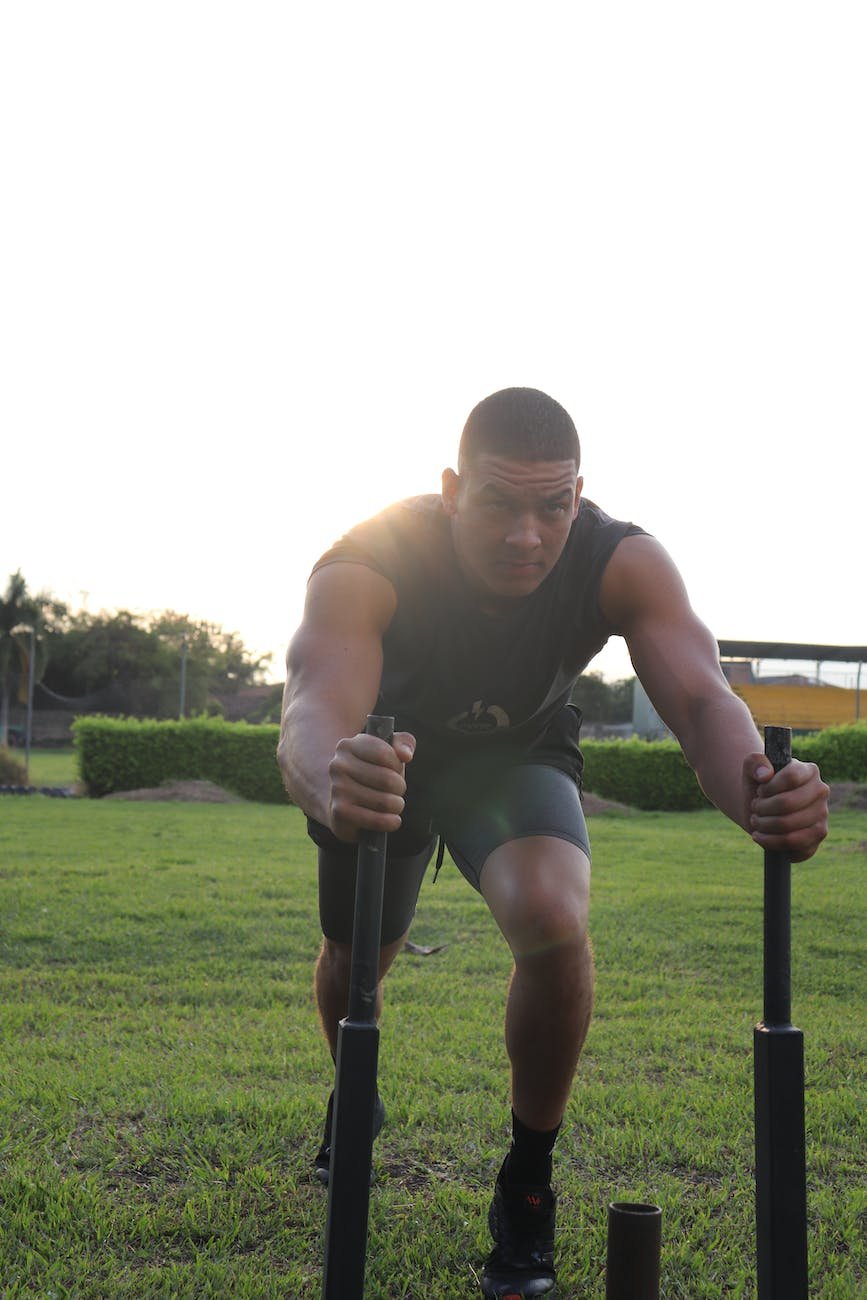How to Become a Great Soccer Center-Back? [FULL Guide]
“We always build out of the defense!” I’ve heard that saying from coaches on my first ever practice… and a million times ever since. The value of a quality defender particularly a center-back is self-evident. It is reflected in the price that these defenders are traded for. Virgil van Dijk, Josko Gvardiol, Harry Maguire, Matthijs de Light, Wesley Fofana, and Lucas Hernandez, have all been traded for over 80 million euros!
Yet, for some reason, every new young player asks to be a striker! The center-backs are still generally undervalued for their importance. The best coaches in the world see that, but the general public doesn’t. Let’s shed some light on the role, the formations where it is used (spoiler alert: all of them!), how to train for it, and how some players have written their names in soccer history as legendary center-backs.
What is a Center-Back?
A center-back, also known as a central defender, is a player positioned in the heart of the defense, typically as part of a pair or trio of defenders. Their primary role is to defend opposing attacks, win aerial duels, and distribute the ball strategically to initiate offensive plays. The actual role can vary based on the teammates and especially the opponents. However, there is nothing clearer in soccer than the primary role of center-backs and goalkeepers – prevent the opposition from scoring goals!
Generally, the center-backs play in 3 or 4-player formations. Based on that, they either have a sole central role paired with wider supporting roles or a natural partnership of two center-backs. In the first setting, the role of the central defender is to defend – period. The wider defenders often support the buildup play, sometimes even pushing up to assist or score.
When there is a partnership of two players, the center-backs try to balance each other. One is the natural aggressor, trying to prevent easy passes to the opposition striker. The other one has to provide backup any time there is a danger. We have seen that with the best teams in history, including the best teams today.
Formations with a center-back
As we said, you can’t really have a formation without a center-back, or really at least two of them. I usually play in a 4-3-3 formation until U15, so that no youth player takes the responsibility of being the last defender. The burden can be too big if the team starts to concede goals. However, in a formation of 4 defenders, it is likely that one player will push higher and help the attack when we are a controlled possession. Here are a few options of how to use fullbacks, but also how can a center-back become a ball-playing defender and even an inverted center-back. We have seen Manchester City doing that with John Stones in the 22/23 legendary treble season. It is a shorter distance for a center-back to push higher while the fullbacks come closer than it is for a fullback to move to the center of the pitch. Pep Guardiola recognized that and solved it with Stones coming to the middle. Also, he put natural center-backs on the sides, so now they have solid defense regardless of “losing” Stones as a defender.
3-player defense
The 3-player defense, such as 3-5-2 or 3-4-3, can be very effective. While not ideal for youth soccer formation coaching, it provides solidity with the right players. As I said in the beginning, it is hard to find quality players when they are very young who want to play as center-backs. It requires patience, very limited risk-taking, and often lots of pressure. The role of defending the entire game can be uninspiring for them. However, at one point they realize the importance and can specialize in certain roles. The one role that symbolizes this is the sweeper or libero. They are the last person in the defense and, therefore carry lots of responsibility.

What is a sweeper in soccer? What is a libero?
A sweeper in soccer, also referred to as a libero, is a specialized defensive player positioned behind the center-backs in a defensive formation. The sweeper’s main responsibility is to read the game, anticipate attacks, and use their exceptional ball-playing skills to initiate counterattacks and distribute passes from deep positions. They often decide on when to make offside traps, too. With the emergence of ball-playing sweeper keepers, having a libero is less popular.
Training guide for a center-back
The most important characteristic of a center-back is the psychological composition. A defender would rather draw 0:0 than 3:3. They would play it safe whenever they can, not taking risks. However, they are targeted by the strikers with whatever weaknesses they might have. Therefore, the center-backs can’t have significant weaknesses. If a center-back is slow, the opposition will put the fastest player they have against them and try to outrun them. If height is the disadvantage, then there will be high crosses for the entire game. Fair or not, attackers can use their strengths and center-backs will be attacked at their weaknesses. Similarly, strikers can play bad all game, but one moment of magic (or luck) will make them heroes. In contrast, center-backs can win all their duels, but one bad mistake can cost them the game.
Becoming a center-back
There are two major items to work on in order to become a world-class defender: individual defending and team defending. Individual defending is something that you simply have to excel in order to be good in the role. This means a combination of physical training, such as agility, speed, and strength. That 1v1 ability is often what we define as a natural talent for a soccer defender. Also, individual technical training – yes, technical defending practice is needed at the highest levels. Finally, basic ball manipulation skills are needed. However, the most important trait is the psychological barrier when playing against attackers who are excellent both technically and physically. It is vital to have focus, bravery, and determination. Again, these are things that can be learned and must be practiced. We won’t go into the drills here but will cover them in other upcoming articles.
Team defending takes 5 minutes to learn and a lifetime to master. The main goal is to only attack the opponents when we have an advantage – numerical, positional, or qualitative. The center-backs are the ones who will need to excel in making these decisions because they have to get them right. Of course, they will need to know how to delay the opponents and force them into a disadvantageous position, but then they need to be able to do the final strike. The whole concept of team defending is too much to dig into at this point, but it’s well worth reading about.
X factors of world-class defenders
Assuming we have mastered individual and team defending, we still know of players that have become legends in defending and others that are just “solid defenders”. It takes some time to motivate the young soccer players to get proficient in all these skills. But then there is something more to them, still. So what are those characteristics that we can see with the best center-backs?
Communication – Captains at the pitch and Leaders in the locker room
We talked about how to get players to communicate when they are young. As you remember, most of it was about defending as a unit. Now, that’s the minimum for defenders. However, because of their dominant presence and importance to the team, many of them become leaders. That still needs to be nurtured, as they are often young and inexperienced. So, it is important not to only give them the armband and the opportunity, but also to guide them to become leaders to their teammates and to themselves.
Defense is the best attack
I often want to rotate the soccer position of the players when they are young, even if they have picked theirs. let my center-backs play a few friendly games as strikers, especially when they are young. Understanding how attackers think is crucial. The defenders are often less pressured, so they can take their time and pick long passes if they see a gap to exploit. Of course, they need to be able to do these long passes. At the highest level, that’s not a problem given the time and space.
Reverse psychology is important, but so is the skill of attacking. Center-backs are naturally big and strong, so using them to defend and attack set pieces, such as free kicks and corners is important. Almost every world-class center-back has several goals each year from set pieces. Some of them are headers, but many are just acrobatic kicks. Being in positions to attack and knowing how to execute are important traits at the highest level.
Famous center-backs
There are many center-backs that left their mark in the world of soccer. The most famous school of defenders is the Italian one. Franco Baresi, Alessandro Nesta, Paolo Maldini, and Fabio Cannavaro are easily in the top 10, if not the top 5 center-backs in history. Franz Beckenbauer, Rio Ferdinand, Sergio Ramos, John Terry, Carles Puyol, and Nemanja Vidic, are right up there, but as you can see they are scattered from other nations. There is something in the Italian National Soccer Team and the way they coach defenders that yields superior results.
Conclusion
We explored the role of the center-back in modern soccer. We looked at the variety of them, how they fit in various formations, and how to become one. I have no doubt that for these world-class players, it is much more of a calling to become so good at protecting the goal. The traits are specific, the practice is intense and the work is never-ending. However, it is such a rewarding and valuable role, that I hope you appreciate even more after reading this guide.

